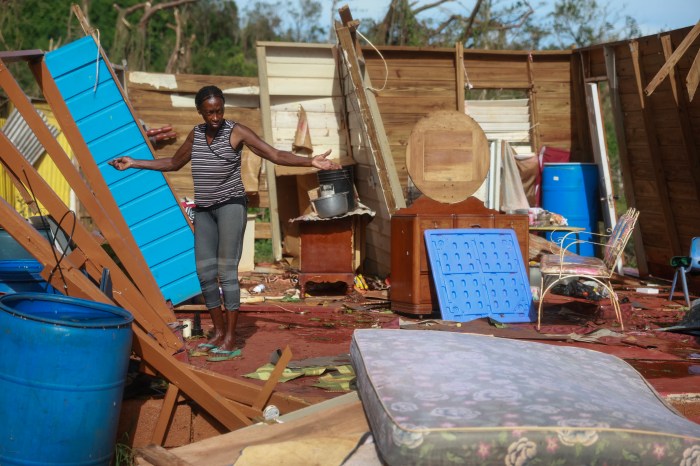PJIA, Simpson Bay — He was just a teenager and fresh out of high school when Aruba-born Raul van Heyningen got his first job at Princess Juliana International Airport (PJIA). The year was 1971 and today, 40 years later, van Heyningen is at the pinnacle of his career, pursuing his lifelong passion of working with planes.
The father of one now holds the position of director of air traffic control at PJIA. But his career choice was no accident.
Ever since he was a boy, van Heyningen said, he was fascinated with airplanes and years later, his eyes still come alive by just talking about this fascination. The calm façade slips away as this veteran aviator opens up about his life and his one true love – planes.
“I was always impressed with aircraft. I just enjoyed seeing an aircraft. If I was outside in the yard or on the road, and I saw a plane, I would always stand to full attention and enjoy the brilliance of man being able to build something that heavy that can fly. It has always been a passion.”
Van Heyningen used the weekend trips to the barbershop, where his father took him and his brothers, to read TIME Magazine. As he puts it, he was sure to find something about a plane or an airport in the old publications.
“I would always wish that he would drop us off and come back to pick us up because that would give me time to go through all the TIME Magazines that the owner always had on the rack. The chance of finding the picture of an airport or an aircraft was always there. … I had no idea of air traffic control. I had no idea about mechanics. I just enjoyed looking … being able to see a plane. It started from there.”
Early career
Born the third of four boys to St. Martin natives Joseph Antoine van Heyningen and Clothilde van Heyningen, Raul found himself moving from Aruba, where his parents had settled, to St. Martin. After completing high school, he began looking for a job and as fate would have it, he landed his dream job. Although four decades ago, he still remembers the day vividly.
“When I went to government and requested information on careers, jobs, I was fortunate to meet the secretary of the governor. I was able to meet [the governor] without having an appointment and was able to speak to him.”
The only vacancies at that time were at the airport and van Heyningen was told to submit his diplomas and application letter to the secretary.
“Just the idea that he mentioned airport caught my attention. I went to the secretary who asked for my documents. At that time, government work was not what it is today; it was not computerized. She [the secretary] said, ‘You can go in a corner of the desk and type your letter.’ The following day I was employed. It did not even take me two days.”
That marked the beginning of an illustrious career. By 1974, he was promoted from administrative clerk to flight information officer. But like so many ambitious professionals, Van Heyningen realised that he needed to be qualified.
“I was just employed as a clerk at the airport and I was in the accounts department. I was doing billing, handling departure tax, and some correspondence. It was in the 1980s when I decided I want to pursue a career in air traffic control.”
In 1987, he left for Curaçao, where he followed the Air Traffic Controllers Course for one year. Upon his return to St. Martin in 1988, he worked as an Air Traffic Controller, eventually moving up to Air Traffic Controller 1st Class, a certified On The Job Instructor and supervisor. Later, Van Heyningen pursued the Radar Controller’s Course and became a radar controller in 2001, the radar manager in 2006, and the director of Air Traffic Service in 2010.
Life as an Air Traffic Controller
What does it really mean to be an air traffic controller?
Van Heyningen explains: “It’s the separation of planes in the air. We guide and give instructions in keeping planes safely apart from each other. You have to be in control. …You are responsible for any plane that is in that air space. We have to keep those planes away from each other … by certain degrees, depending on the type of instrument they are using. On radar, you actually see the planes. In procedural, you have to create a mental picture in your mind of all the aircraft in your area of responsibility. In the early years there was no radar. Now you can see the planes … but the types of separation are still procedural and radar.”
It is this level of responsibility, Van Heyningen said, that keeps all air traffic controllers alert every second of the day. No situation is the same and that is the major challenge in his work.
“You always have to be alert. If equipment breaks down you still have to be in control. You are still responsible for keeping those planes safely apart.”
Then there are challenges with load. Van Heyningen said the alertness of an air traffic controller is really tested during the slow travel season. Instead of monitoring 40 planes in one hour, there may be only eight. With more traffic the controllers are always alert.
When asked what kept him going over the years, his response was simple.
“My love for the job. … I was at peace with what I was doing. It’s what I wanted to do and I have never regretted making this decision.”
Apart for the deep passion for the job, Van Heyningen said there were people along the way who had confidence in him and saw and nurtured his potential. Among those who motivated him was the former director of Air Traffic Service, Jan Brown. Brown, he said, was always willing to listen and always ready to answer his questions.
“I give those people credit because you start at a certain position, and you have supervision, and they saw the potential. … After becoming a certified air traffic controller, once the positions are there, you begin moving up. So I have started from step one and now I am on the last step.”
Life after PJIAE
For the past four decades, Van Heyningen made his career his life. He has given a lot to the job and to the island. Before this decade is over, he will be retired. He does not plan to give up his passion, though.
“Being part of the professional growth and being part of the group that helped build Juliana where it is today, I will continue to do so. I would not do anything less on any day.”
After he retires, Van Heyningen plans to be a part of an organization that works with the youth. He has a lot of ideas to share and plans to do so, even if it is done behind the scenes. Someday, he said, he would like to see St. Martin really become the leading hub for all the neighboring islands. To make this happen, there must be continuous development and upgrading of staff.
To the young people who want to become air traffic controllers, he said:
“It has to be something that you really want to do. It is not about simply having a job because you have to be comfortable with what you do. It’s not a difficult job, but yet it is not something that anyone can do. You have to have that niche for dealing with stress. Your concentration can become very intense. It is a high-stressed job.”
On the evening of Dec. 3, 2011, mere minutes after sharing his story, Van Heyningen walked down the red carpet at the only place he has ever worked, to receive an award for years of service. He was pleased to be honored.























